What is a Rail Transfer Cart?
As a ‘mobile platform’ for industrial heavy-duty transport, rail transfer cart relies on a customised rail system to achieve precise handling of loads from 1 ton to 1,500 tons and is widely used in heavy industries such as steel, shipbuilding, and automobile manufacturing.
15 Ton Rail Ladle Cart Video
Rail Transfer Cart
Rail transfer cart (RTC) is a heavy-duty transport equipment running along a fixed track, which realizes efficient transfer of heavy loads on horizontal or vertical production lines through modularly designed load-bearing platforms, high-loaded wheelsets, and intelligent control systems. Its core features include:
- Load-carrying system: The platform, welded from high-strength steel, can be customised with flat surfaces, V-frame, or non-slip surfaces according to the shape of the load to ensure even load distribution. For example, when transporting precision machine tools, the platform can be equipped with shock absorbers to avoid vibration damage.
- Driving system: Including motor, reducer, wheel set and other components, through the gear and track engagement or friction drive to achieve forward, backward and variable speed. According to the scene, the power source can be selected from batteries, slip lines, cable reels, etc. (described later).
- Control system: integrated PLC control module, sensors and human-machine interface, supporting remote operation (e.g., wireless remote control within 200 metres), automatic obstacle avoidance (LIDAR detection of obstacles) and multi-vehicle coordinated scheduling (synchronous start-stop through industrial IoT).
Transfer Carts on Rails: Features
- Stability: Compared with the traditional wheeled transport equipment, the rail guidance system of rail transfer carthas unparalleled stability. The matching error between the steel rails and wheels is controlled within 0.5mm, and with the low centre of gravity design, the tilting angle during driving is no more than 0.3°, even when transporting 100-tonne steel coils.
- Automation: By equipping it with magnetic navigation, QR code positioning, or a laser SLAM system, rail transfer cart can achieve fully autonomous operation. In the battery workshop of a new energy vehicle factory, 20 rail transfer trolleys shuttle between coating and assembly processes according to preset paths, completing 30 material turnovers per hour, with an efficiency increase of 40% compared to manual operation.
- Route Customisation: The track layout can be flexibly designed according to the topography of the factory, whether it’s a straight line, U-shape, circular, or cross-floor ramp, which can be seamlessly connected through rail splicing and turnout switching. The workshop of a heavy industry company has a narrow space due to historical reconstruction. By customising the ‘S-type’ track, transfer trolley can complete a 90° turn in a 2-metre wide channel, which improves the transport efficiency by 30%.
- System synergy: rail transfer trolley does not operate in isolation but is the core hub of the industrial logistics system. In steel mills, it works with overhead cranes: the crane lifts hot rolled steel plates to transfer trolley platform, which transports them to the shearing line; in ports, transfer trolley works with AGV forklifts to complete the ‘last mile’ transport of containers from the shore to the storage area. This cross-equipment co-operation has improved the efficiency of the plant’s logistics by 20-30 per cent.
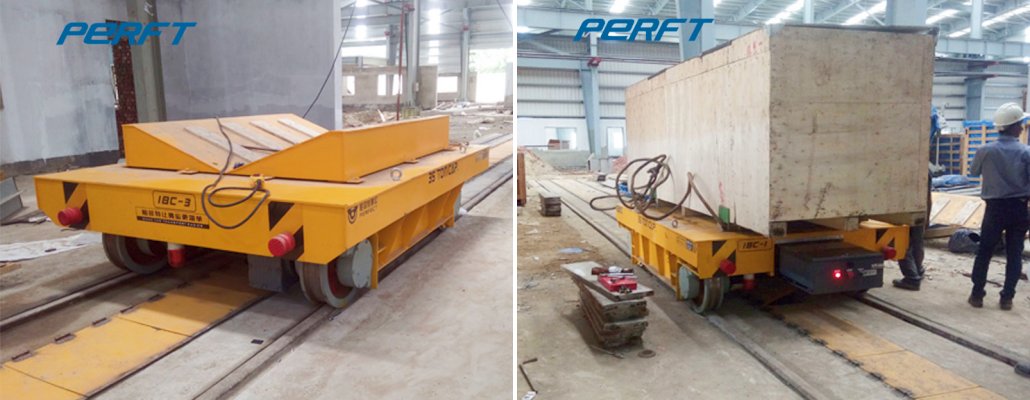
Rail Transfer Cart Power Supply Options
- Battery Powered
- Busbar Powered
- Cable Drum Powered
- Low Voltage Rail Powered
Applications of Transfer Cart on Rail
Steel and Metal Processing:
- In the hot rolling line, rail transfer carts are responsible for transporting 200-tonne billets from the heating furnace to the rolling mill, and the heat-insulated design in high-temperature environments ensures the stability of the equipment;
- In the cold rolling workshop, the anti-magnetic platform on rail transfer cart can safely transport silicon steel sheets to avoid dimensional deviations caused by magnetic field interference.
Oil & Gas:
- Explosion-proof battery transfer cart undertakes the indoor transport of catalyst tanks (80 tonnes per unit), with a zero-emission design to meet the safety standards of the petrochemical industry;
- On offshore drilling platforms, a corrosion-resistant transfer cart overcomes the challenges of salt spray and vibration to achieve rapid deployment of equipment spare parts.
- A natural gas treatment plant uses a skid line rail transfer cart, which operates continuously for 3,000 hours without failures in a -40℃ low-temperature environment.
Ships and Ports:
- When transporting 300-tonne ship segments, the multi-vehicle synchronous system ensures load balancing with an error of less than 10mm;
- In port container terminals, automated transfer vehicles work with shore cranes to achieve ‘ship-vehicle-depot’ seamless docking and single-box transfer.
Automotive and heavy manufacturing:
- In the engine workshop of an automotive OEM, the load distribution can be monitored in real time by the load cell on rail transfer cart to ensure that the 60-tonne engine block is kept level during transport;
- In the shield machine assembly line of a heavy industry enterprise, the customised V-type platform achieves the stable transport of the shield cutter plate with a diameter of 8 meters.
Mining and Infrastructure:
In open pit mines, dust-resistant cable reel transporters are responsible for transporting 150-tonne ore buckets from the mining area to the crushing station, and the suspension system on the rugged road ensures a smooth ride;
In the bridge prefabrication yard, transporters transport 200-tonne concrete girders from the maintenance area to the lifting station.
At the bridge prefabrication yard, rail transfer cart transports 200-tonne concrete girders from the maintenance area to the lifting station, working with the positioning system to achieve millimetre-level docking.
An infrastructure project uses 50 100-tonne transfer trucks to transport 100,000 tonnes of building materials in three months, a 50% increase in efficiency compared to traditional trailers.
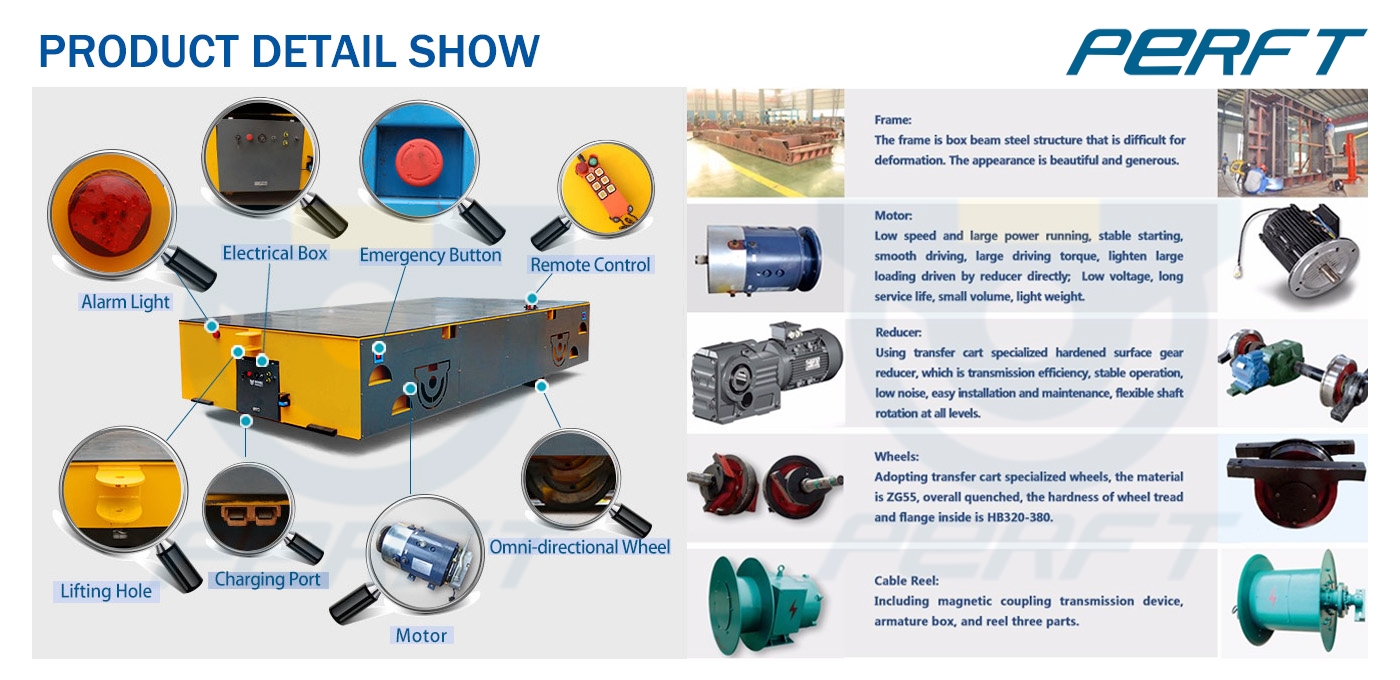
From 1-tonne precision parts to 1,500-tonne mega-equipment, rail transfer carts have become the core infrastructure of modern industrial logistics with their excellent load capacity, customised flexibility, and system synergy. Whether it’s a hot production line in a steel mill, an open dock in a shipyard, or a clean room in a semiconductor factory, it has always solved the world-class problem of heavy-duty transport in a safe, efficient and intelligent way.
Back to List
-
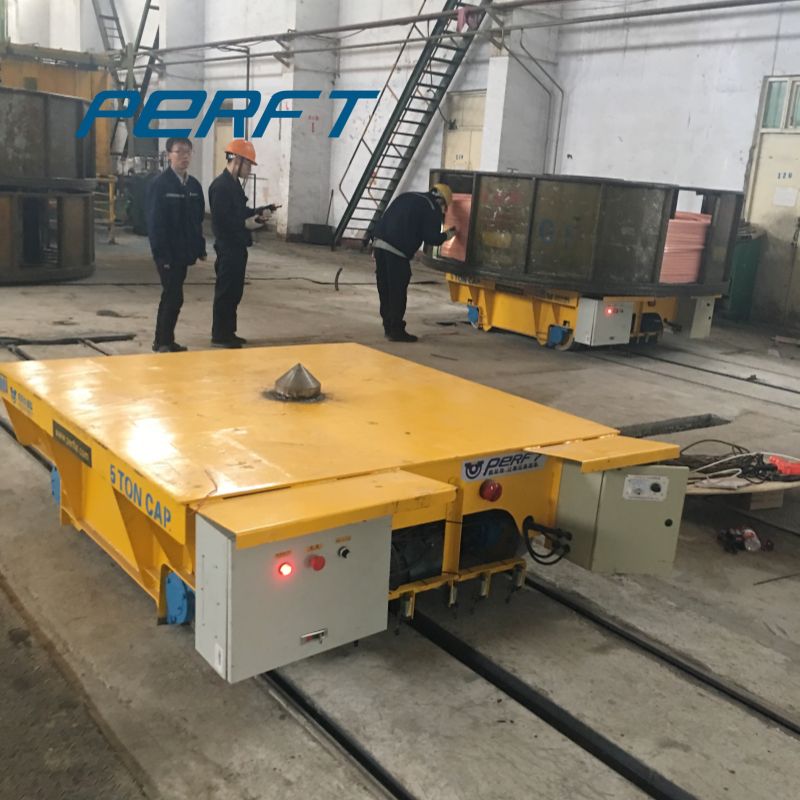 下午5:44What is a Rail Transfer Cart?
下午5:44What is a Rail Transfer Cart? -
上午10:58Rail Transfer Cart For High-Precision Materials
-
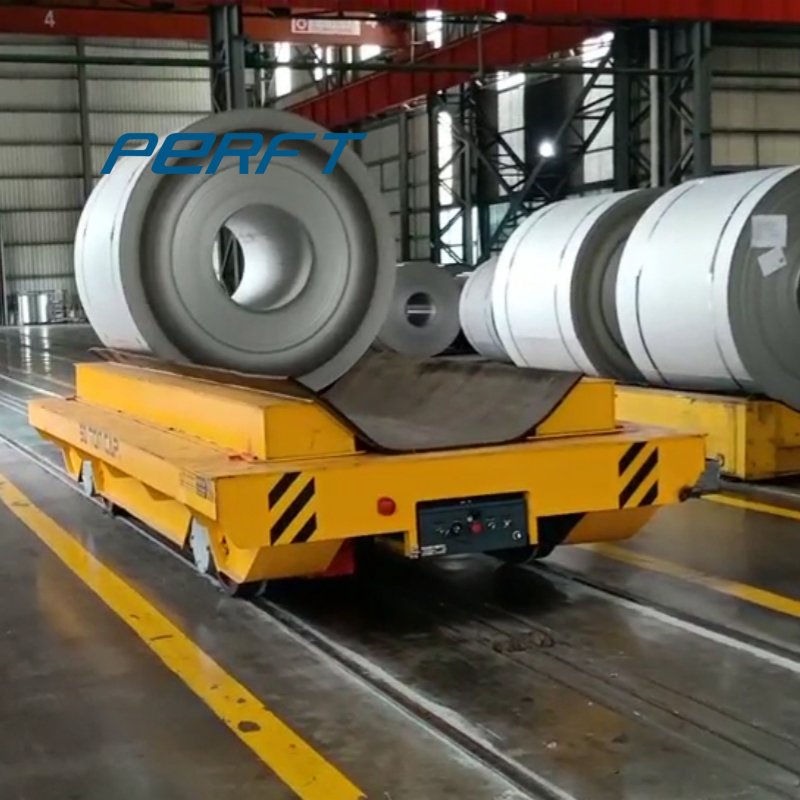 上午8:17Coil Transfer Cart: Battery Powered Or Cable Powered
上午8:17Coil Transfer Cart: Battery Powered Or Cable Powered -
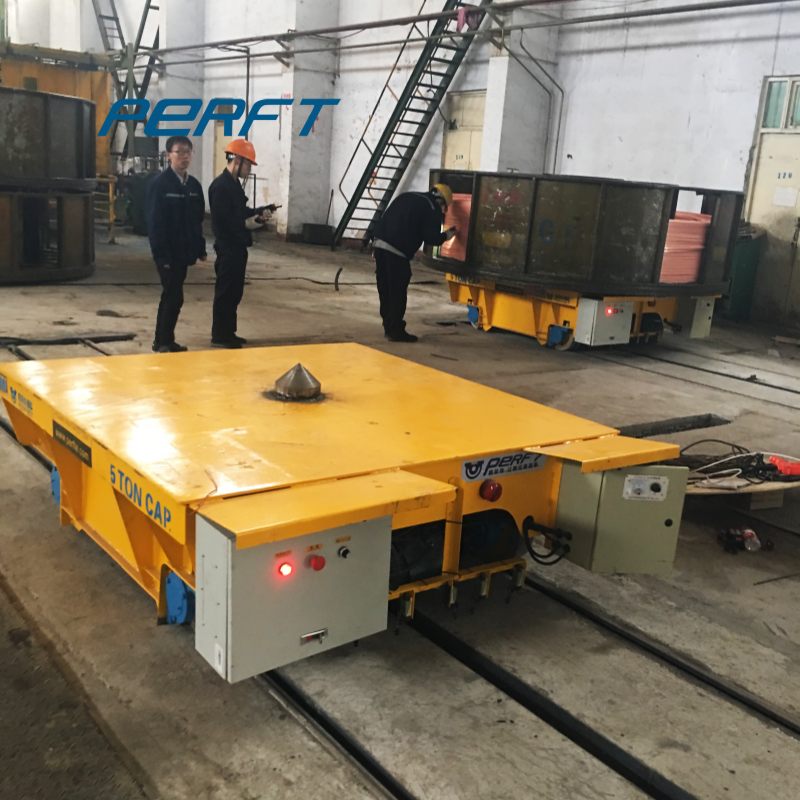 上午11:09Industrial Rail Trolley Multi-Station Auto Dispatch
上午11:09Industrial Rail Trolley Multi-Station Auto Dispatch -
 下午3:29Why Rail Transfer Solutions Are Preferred In Metallurgical And Casting Operations
下午3:29Why Rail Transfer Solutions Are Preferred In Metallurgical And Casting Operations

